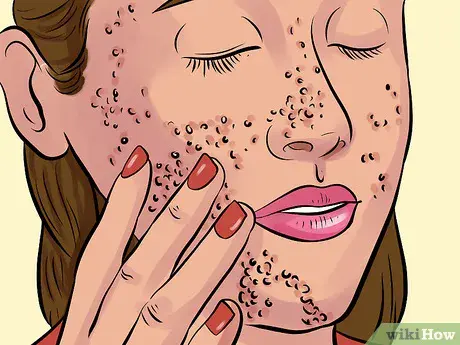Contents
It would seem that special things can be said about the rules of peeling. In fact, there is quite a lot of information on this topic, and all of it is useful.
Kinds of peeling
Laser
The destruction of the stratum corneum is achieved by the action of a laser.
Mechanical
Skin resurfacing is done using abrasive materials. The most effective is hardware dermabrasion: the device sprays microparticles under pressure, which polish the skin, removing the top layer of dead cells. This procedure is done in the doctor’s office. If we talk about cosmetic products, then mechanical peeling includes:
salt peeling;
gommage;
scrub
In cosmetology, there are several ways to exfoliate the skin.
Chemical
The procedure consists in applying a chemical agent, most often an acid, to the skin in order to cause damage to the skin and “provoke” an active regeneration process. Chemical peels differ in the depth of exposure.
Surface – soft and delicate, damages the upper layer of the epidermis, suitable for young and problem skin. The main active ingredient is fruit acids (glycolic, lactic, salicylic) with an exfoliating effect.
Median — more aggressive peeling than superficial. In the process, the stratum corneum of the epidermis is disrupted. The active ingredient is trichloroacetic acid (TCA). Effective against age-related changes, hyperpigmentation, post-acne. The procedure is carried out only by a specialist. As a rule, such peeling involves a period of rehabilitation.
Deep involves the use of substances such as TCA and phenol. Held only in a hospital setting under the supervision of a medical team. The effect is long, but the risks are much greater than the previous two. Now they talk more about deep-median peeling than about deep-seated peeling itself. One of the main tasks of deep peeling is the fight against age-related changes.
How to use peeling at home
The peelings listed above are carried out in a clinic or salon, and now we will tell you how to make peeling at home – more gentle, using cosmetics for home care (peeling, scrub, gommage).
Preparation. Apply any exfoliating composition only to thoroughly cleansed facial skin. Remove makeup with a cotton pad with makeup remover milk or micellar water, then wash your face with a gel or foam.
Application Apply peeling to clean, dry skin and leave for 5-7 minutes, then rinse with water. If you use a scrub to exfoliate, spread the product over your face in circular massage movements, then wash your face.
Completion. After peeling, apply a tonic, and then a moisturizing or nourishing cream.
Determine if the cream you are using is right for you.
Frequency of the procedure
Professional peeling for correction, for example, post-acne, must be carried out in a course (up to 10 sessions with superficial exposure), and at home, systemic regularity is important.
Home peels are based on low concentration acids and enzymes.
In the cabin
The frequency of the procedure should be chosen by the beautician.
superficial exfoliation is carried out in a course, according to 4–8 procedures with an interval of 7-10 days. Repeat – about six months later.
Medium Peeling: regularity – no more than once every six months, and for very sensitive skin – once a year.
Deep peeling: intervention is very aggressive, therefore every few years and under strict guidelines.
At home
The frequency of application depends on the composition of the product.
Formulas with a high concentration of acids use no more than once a week.
Peeling masks and gommages with the addition of enzymes and acids – up to 3 times a week. Such products can not be used for several days in a row, take a break of 1-2 days.
The choice of means for peeling
The composition of cosmetic peels for home use, as a rule, is quite soft and gentle. As for the release formats and textures, most often it is a gel, cream, mask, lotion. Based on alpha and beta hydroxy acids. Some products may contain chemically synthesized keratolytic complexes.
For dry skin
Peeling creams, gommages, night care products (usually acid lotions) are suitable. They are minimally irritating to tissues, but with regular use they work effectively. In indelible care products, it is better to exclude those with granules in the composition.
Re-Plasty Power A + HA two-stage night peeling program, Helena Rubinstein is a gel with hyaluronic acid and a cream with retinol that renews the skin. Suitable even for sensitive skin.
For oily skin
Your choices are acid-infused scrubs and exfoliating lotions. A combination of several types is allowed, for example, salicylic + glycolic + lipohydroxy acid. If, after starting to use such a remedy, the skin begins to actively exfoliate, do not be alarmed: this is a normal process.
Retexturing Activator Moisturizing Serum, SkinCeuticals based on urea and hepes stimulates the renewal of skin cells, gently exfoliating.
For sensitive skin
It is better not to injure such skin with scrubs and generally do not disturb it once again. The best choice is lotions and creams with a low content of acids, chemically synthesized substances. It is better to refuse products with enzymes and extracts of exotic plants, there is a risk of an allergic reaction.
Soft scrub Surfin Scrub, La Roche-Posay acts as delicately as possible, suitable for even the most sensitive skin.
Precautions for use
You can not carry out the peeling procedure for any damage to the skin:
abrasions;
scratches and cuts;
squeezed out pimples;
any rashes caused by allergies, eczema, herpes.










